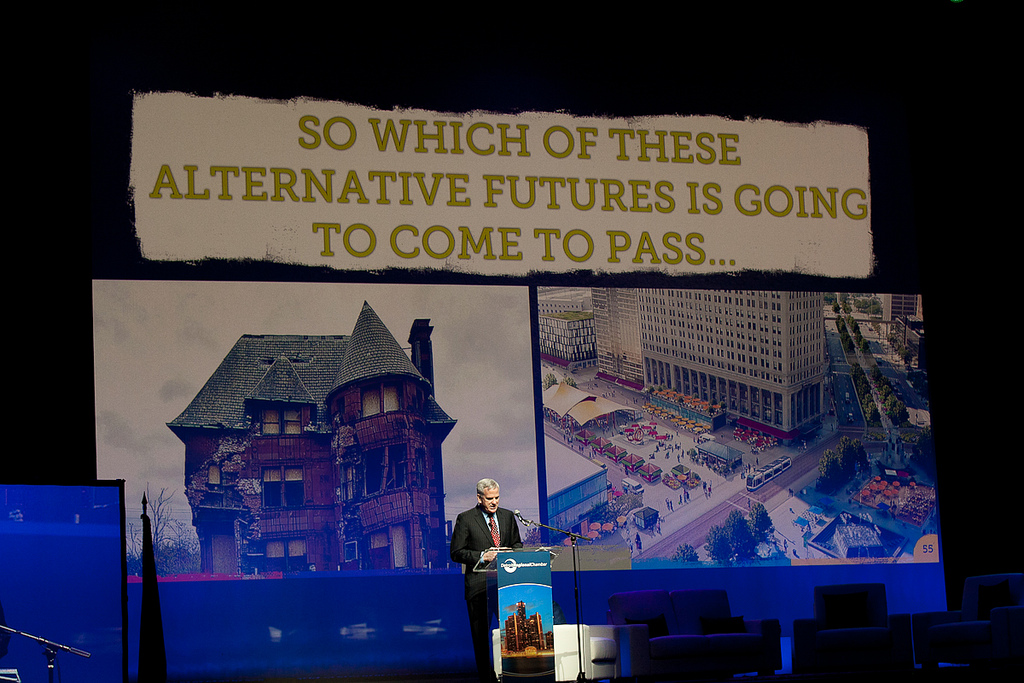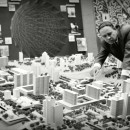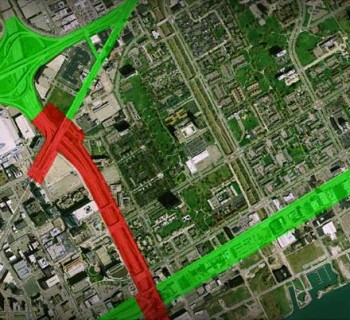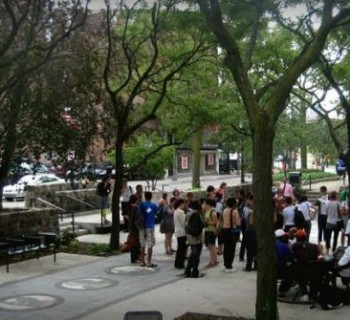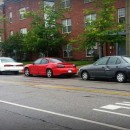DETROIT—Ahh, spring. It doesn't quite yet feel like it just yet, but we can all feel the effects of that extra hour of daylight that grows longer by the minute each day. The wind is still crisp, but the sun is beaming a little bit more each day.
This also means warmer weather, bathing suits and riding your bike to get ice cream -- maybe in a freshly painted bike lane? If you are, there's a good chance you live in one of the growing number of communities with growing bike amenities and just overall higher quality living arrangements.
Seems like our leaders have been (finally) catching on and are scrambling to engineer ways to attract young people and ambitious entrepreneurs.
As real estate activity is stimulated, and more small businesses spring up -- not only throughout Detroit's Big 3 neighborhoods (Midtown, Downtown, Corktown) -- but in Brightmoor, the Villages, Southwest and elsewhere, many leaders are asking, "How do we nurture the growth?"
That was the main topic at the inaugural Detroit Policy Conference in late February. Business and government leaders have tasked themselves to harbor and facilitate sustainable economic growth while also making citizens happy -- a decades-old concept many refer to as placemaking.
M1 CEO and Rock Ventures President Matt Cullen set a positive tone for the conference, listing off Detroit's very recent successes and plans moving forward in the future, which included developing neighborhood connectivity and vibrancy.
Writer and urban theorist Richard Florida, another keynote speaker at the event, reinforced the placemaking concept even further, saying we must make the city, and subsequently the suburbs, attractive places to live - and that doesn't necessarily mean fewer schools and more Meijers.
He also urged regional cooperation between Detroit and its neighboring cities. "If it stays divided, city versus suburb, us versus them, the region is in deep trouble."
A lot of that development, however, ultimately relies on safety, education, work and transportation. Until those systemic problems are addressed -- realistically -- the well-sought and evading "creatives" might bask in all the green spaces, M1s, M@disons and "third places" the city has to offer, but when they start having kids, 99.9 percent of them will move beyond outside the city if its taxes, crime, classroom sizes and budget deficits remain high.
Transparency, collaboration are key to moving forward
As outlined in the Detroit Future City Framework, participation, equity and an open and transparent government that lets citizens participate with ease are key to 21st century progress. As a map for progress in the wake of rampant political corruption and years of municipal stagnation, the framework finds that a channel for participation will be the backbone for any policies the city enacts in the future as well.
The day after the Conference, Governor Rick Snyder declared a financial emergency in Detroit, and later appointed Kevyn Orr, who will take his position just in time for Detroit to enjoy just one week of spring before their financial and social autonomy is commandeered by the state for at least the next 18 months.
The presence of an EM, however necessary, undermines the participation component in its very essence: it strips voting power from elected officials. It also goes against the grain of developing a more transparent government because an EM is only accountable to Snyder. And just because we're allowing an EM to slice through our democracy doesn't mean city officials no longer are accountable to citizens, either.
Economic development everywhere
Transparency, input and EM aside, economic development wise, Detroit definitely has something going for it. Speakers at the Conference acknowledged the loads of good work and explored it with breakout panel discussions, which focused on streamlining policy and ensuring a friendlier, more accessible business climate.
Wayne State University Urban Planning Chair Robin Boyle led one such panel, the Small Business Innovation Project, during a breakout session. His students led the discussion by explaining how they developed a business for a neighborhood beyond the city's Big 3, based on its needs. The five projects presented ranged from specialty food services to demolition to design firms.
The purpose of the program, Boyle said, was to "connect with the neighborhoods and people who barely have an education. ... Making that link is terribly important."
Boyle said although the keynote speakers touched on Detroit's outlying neighborhoods only briefly, and that recreating the central city was undoubtedly good, there were other parts of the city that needed to be focused on as well.
"They are there," Boyle said, "so it makes sense, as Detroit Future City moves forward, that some entrepreneurial ideas work with neighborhoods and people who live in other parts of the city. These presentations are made to recognize [and utilize] the assets of these neighborhoods."
Public-private partnerships, everywhere, on all scales
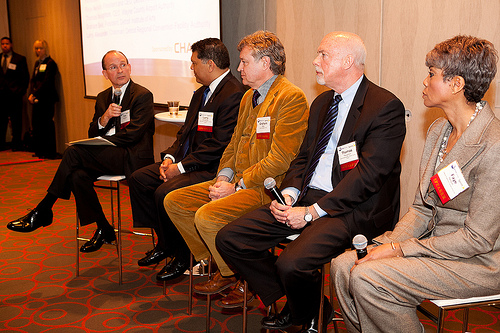 In another breakout called Reimagining Detroit's Assets, panelists spoke about seeing how a future Detroit works together to get things done while taking a unique approach to solutions.
In another breakout called Reimagining Detroit's Assets, panelists spoke about seeing how a future Detroit works together to get things done while taking a unique approach to solutions.
"How do we take what you've gone through and learned and move that to the city government so we can learn from it?" asked Detroit Riverfront Conservancy's President and CEO Faye Nelson. "At the end of the day, if you really want to do this right, you need to focus on collaboration and community. We have to articulate the common goal, which is the betterment of the community."
Nelson highlighted the importance and future of public-private partnerships in Detroit and city building, which was another big topic of conversation throughout the conference. She pointed to many other projects in the city that used the PPP model, including the M1 street car project, and talked about its impact on cities.
"Without the public private partnership, the Conservancy would not have been established and the riverfront would not have been developed," she said. "The most important point we've found is that working together can make a difference. The public-private sector makes such a critical contribution to support our cities and is something we continue to focus on, fine tune and value in a tremendous way."
"The public-private partnerships are what make cities great," Florida said. "It's the ability of our business community to help provide the resources -- in Detroit the level of social entrepreneurship is on a scale I have never seen."
Other breakout sessions at the Conference included talks about food systems, design and branding, small business policy, the future of information technology, and economic development and investment.
Getting hip to the modern age
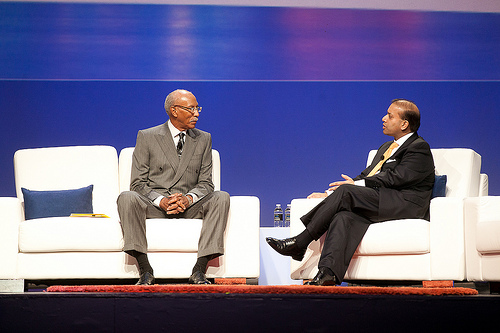 While big mover-shaker types like Gilbert and Nelson precipitate change from the top down, engaged young people are likewise and in contrast working tirelessly to pickup up any slack, and to improve civic systems so it functions more efficiently for citizens.
While big mover-shaker types like Gilbert and Nelson precipitate change from the top down, engaged young people are likewise and in contrast working tirelessly to pickup up any slack, and to improve civic systems so it functions more efficiently for citizens.
Private entities like Rock Ventures are apparently starting to get warm to crowdsourcing those ideas, too. Cullen announced in the morning at the Policy Conference that the venture capital company would be hosting a design competition for the site where the former J.L. Hudson building once stood. He says we can expect it to have retail, parking and residential amenities, but did not release any further details.
"We can see there are pockets of need and that starts us out," said Kristen Gregory of small business innovation. "Services like ours look at the opportunities and how we can address them." The city, however, while privatizing everything they can in order to balance their budget, apparently aren't so keen on actually giving the citizens what they want and need. They routinely look past the potential to create decentralized networks with small private partners like the Detroit Bus Company, who start small, from the ground up. While they're far from a viable mode for city-wide transportation, they are structuring their business based on need and nothing else.
Michelle Proctor, who was developing a demolition and recycling project for the class, agreed. "We have to make community a partner so they feel empowered as a piece of the overall plan," she said.
So while Detroit falls short in resources for adequate city services, venture funds and foundations seem eager to fund ideas that address these services too, and in return can create competitive, fulfilling jobs and career paths.
"It adds a whole other dimension in how you can reach out to the community," Gregory said.
What's next?
If private entities like Gilbert or even the Detroit Bus Co. can come in and pick up slack, how can Detroit's policy makers learn from innovative thinkers and put its residents to work solving problems and shortfalls?
"The emergent or engaged civic institutions and residents who have taken on the city's toughest challenges at this level of detail have the ability and the vision to do more; they just need the capacity, in the form of information and resource," says the Detroit Future CIty report, which was essentially a mayoral commission for Detroit's future.
That can be applied to any realm: education, security, recycling, lighting, transportation -- anything. The framework outlines what needs to be done, but didn't specify how -- and that would be a great start as we look forward.
Like many of the private companies working with and within Detroit, the city government also needs to embrace technology and open source platforms, which both also highly contribute to greater participation and communication.
"What you see bubbling around the new and old Detroit is that it looks like the top is doing better," Florida said. "Everyone is anxious -- I think now is the time in Detroit to make sure everyone can participate. Getting Detroit to the next level will revolve around how everyone may participate and benefit.
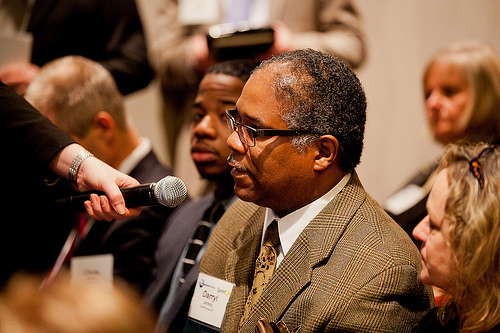 "My biggest worry is that placemaking and city building become an excuse for gentrification and an exclusive kind of development," he said. "But you have to make the economic argument because it's the only way things like placemaking get traction."
"My biggest worry is that placemaking and city building become an excuse for gentrification and an exclusive kind of development," he said. "But you have to make the economic argument because it's the only way things like placemaking get traction."
What all this points to is ultimately establishing a better reputation, or appearance, as a government, to have the capacity to accomplish all of these goals. However much it's debated, we've defined a framework for how we will move forward, yet it is only as good as who is tasked with implementation and how firmly we stick to its recommendations.
Bing's announcement of the Detroit One program, which aligns policing efforts from the Detroit and Michigan State Police as well as the Bureau of Alcohol, Firearms and Tobacco, is a good start too.
Bing said at a March 22 press conference that collaborative programs like these coalesces the entire community into one powerful force to increase safety in Detroit. His overall goal is to reduce gun violence by 25 percent in 2013.
So, where's our Detroit One for education and transportation? How do we make sure it's beneficial for the most people possible?
It's a clear case of the chicken and egg. Leaders can dream about creatives and development and what have you, but however they walk the line, it's a delicate balance. Initiatives need to be driven by informed and sincere motivation. What the Detroit policy conference really gave us was a look at how our leaders are representing the region - sometimes with due diligence, sometimes not. What it says is that most of our leaders see the tools, tools that are heavy. The muscles that need to be used to lift them haven't been used in decades and they must be exercised.
"I think the key to success is we’re focused on one mission: we're not here to serve political interest but we’re here to get the job done," Larry Alexander, chairman of the Detroit Regional Conventional Facility Authority, said.
That means looking past politics and working for everyone in Detroit. If we do this right, and we do it now, we could emerge from this cold, grey climate Detroit has been stuck in for decades and begin to see a little more sunshine.



